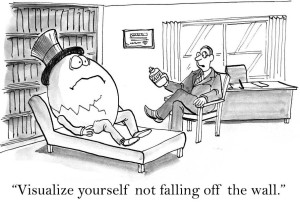We make decisions every day for all types of things. Sometimes it seems easy and other times more difficult. How does a millionaire make decisions?
 I wasn’t thinking about this until I read an interview with Jim Treliving co-owner of the T &M Group (Boston Pizza) and also a dragon on the Dragon’s Den TV show.
I wasn’t thinking about this until I read an interview with Jim Treliving co-owner of the T &M Group (Boston Pizza) and also a dragon on the Dragon’s Den TV show.
He was being asked about how he chooses to invest in a business opportunity that is pitch to him on the Dragon’s Den show. He answered that he invests in entrepreneurs who he can count on when things go bad.
The interviewer then asked if he had some kind of analysis grid and he said yes. He said I have three tools, my head, my heart and my instinct.
I found this very interesting as I teach a similar approach in our leadership and team development training programs. This approach is based on the fact that we all possess three brains or intelligences that are in constant use for us to function and make decisions.
These three intelligences are just what Jim alluded to in the interview. Somehow he had become cognitive of this concept and was putting it to good use.
Even though we all possess the three intelligences we don’t use them in the same way and we don’t always use them in a balanced manner. Jim seems to have been practising this approach for quite a while and has learned from his experience.
 He said he first listens with his head, he analyses with his heart and then relies on his instinct to make his decision. Jim seems to have developed a good self-understanding and has found a balanced way to use the three intelligences in his decision making.
He said he first listens with his head, he analyses with his heart and then relies on his instinct to make his decision. Jim seems to have developed a good self-understanding and has found a balanced way to use the three intelligences in his decision making.
We can all learn from Jim but first we must need to practice being aware of our three intelligences and how they function within us.
Some people tend to be more logical types, others more emotional types and yet others more physical or instinctive types. In our training programs we use animals to represent the three different intelligences.
The lion represents the physical or instinctive intelligence. The St. Bernard represents the emotional intelligence in the Fox represents the intellectual intelligence. The difference in thinking styles at the fundamental level revolves around which intelligence is more dominant. Are you more like a lion, the St. Bernard, or the fox?
Types of People
The lion types tend to like getting things done or are motivated by physical pleasures. St. Bernard types like to help and support others whether it be through caring for them or doing things for them. The foxes like to think about new things or analyse them for deeper understanding.
No matter which of the three intelligences is most dominant in you, the challenge is the same for all of us when it comes to decision-making. It is to have a balance use of all three  intelligences especially when making highly important decisions that have a big impact on ourselves and others.
intelligences especially when making highly important decisions that have a big impact on ourselves and others.
Fear is what holds us back from being well balanced in all three intelligences. Fear is a built-in mechanism for self-protection, but our fears are often inappropriate reactions to situations and events. Our past causes many of our present fears that are unfitting. By understanding the causes for these fears and learning how to overcome them we can make better use of our three intelligences and become more effective in all aspects of our lives.
Through self-awareness you can become like Jim and develop your own balance system to making better decisions using your three intelligences wisely.
Stephen Goldberg




